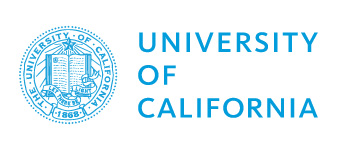
ENVIRONMENTAL SCIENCE, PART 2
Price: $125 | Credits: 5 | Department: Science | Course ID# 271-2
This course is the second part of a two semester course that examines environmental science and the concept of sustainability from scientific, personal, and philosophical perspectives. Students learn the science behind different energy resources, myriad types of pollution and their effects on the environment and human health. While the scientific aspect forms the core of the course, it is complemented by discussion of relevant environmental laws and environmental economics, as well as discussion of personal sustainability practices and consideration of one’s carbon footprint, waste production patterns, and energy use. The course is rounded out with strategies for a sustainable future. Environmental Science is approved by the University of California A-G as a science (category D – life science).
Upon completion of this course, the student is awarded 5 credits. Each credit corresponds to 15 hours of study. Of course, some students work more quickly than others, and some can devote more hours to study, so some students are able to complete the course in an accelerated rate.
LEARNING OBJECTIVES
In this module, students gain a comprehension of the following:
- The evolution of agriculture over time, fertilizer and Norman Borlaug’s Green Revolution in agriculture, and relevant topics in soil health and biodiversity.
- Major land-use issues and their effects on ecosystems and the climate.
- The multifaceted concept of “sustainable agriculture” as well as the connection between cattle farming and greenhouse gas production.
- The different strategies that farmers, communities, and consumers adopt in an attempt to make their food consumption or agricultural operation more environmentally-friendly.
- The production of waste, where it goes, and strategies for disposing of waste on both societal and individual scales.
- Ecological principles related to consumption, growth, and environmental economics.
- Principles of environmental economics are discussed including the basics of what environmental economics is, the triple bottom line, cost-benefit analysis, externalities, natural capital and ecosystem valuation, carbon pricing (cap-and-trade systems and carbon taxes), as well as how the concept of the “growth economy” relates to the idea of sustainability.
- Ethical and philosophical systems and the different ways that people view nature.
- Strategies that regions and societies are adopting to deal with climate change and other environmental issues.
TOPICS COVERED
This course covers the following topics:
- Land for growing biofuel, deforestation, over-fishing, and urban sprawl.
- Organic, free-range and grass-fed products.
- Fair Trade products.
- Farmers’ markets and community supported agriculture (CSA), permaculture, community gardens, native gardens, and food forest gardens.
- Landfills, plastic pollution, electronic waste, and ways to avoid waste like recycling, up-cycling and reusing, and cleaning up plastic pollution.
- What individuals should do with certain types of hazardous waste and how to properly dispose of old cars, used motor oil, harmful chemicals and cleaners, and old medicines.
- Population growth and Earth’s carrying capacity, as well as the contrast of conservation versus preservation.
- Corporate social and environmental responsibility, environmental value systems (technocentrism, ecocentrism, anthropocentrism), Gifford Pinchot’s Resource Conservation Ethic versus Aldo Leopold’s Land Ethic, bioregionalism, the legal rights of nature, environmental justice, and chemist James Lovelock’s Gaia Hypothesis.
- Biomimicry in products and architecture
- Transition towns, ecovillages and ecocities as ways of making towns and cities more sustainable.
- Green technology; geoengineering and other means of climate change mitigation; and climate change adaptation

Course Details
- 5 Credits – $125
- Second semester of Environmental Science
Approvals:






















